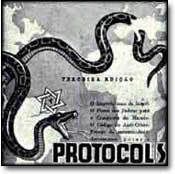
According to the official propaganda which the Jews constantly push out about the Auschwitz camp, the evil Nazis “exterminated the children as soon as they arrive” with the “selection on the ramp” conducted by Dr. Josef Mengele and others.
This is, like everything else the Jews say about Auschwitz, simply a lie. A spat over ownership of art works – yes, art works – made in the Auschwitz camp has revealed that not only was there a children’s section in the camp (impossible if the original Jew propaganda is believed!) but that it also had a Snow White and the Seven Dwarfs mural painted in it to cheer the children up!
The incredible story of the children’s section at Auschwitz has come to light with the demand by supporters of an old Jewess, Dina Gottliebova Babbitt, who was asked by Dr. Mengele in person to paint a series of pictures of Gypsies for him in the camp in 1944.

It is claimed that Mengele wanted the painting to “study race” but this is clearly false, as Nazi racial scientists would always use photographs for such matters, which would always accurately capture racial features far more properly than a painting. The images were clearly made as art, as can be seen below:

The Auschwitz museum, which considers the watercolors to be its property, has argued that they are the true owners of the artworks, and has refused to return them to Babbitt as she is demanding.
Dina Gottliebova was a 19-year-old art student in Prague in 1942 when she first went to a concentration camp. In September 1943 she and her mother, Johanna, were moved to Auschwitz, where she tried to cheer the imprisoned children by painting a mural of a Swiss mountainside and “Snow White and the Seven Dwarfs.”
The work drew the attention of Mengele, who singled her out in March 1944. Babbitt claims, ridiculously, that she demanded of Mengele that he “also spare her mother or she would commit suicide by touching an electrified fence.”
Babbitt and her mother survived internment in two more concentration camps before being set free in May 1945.
In 1973 the Auschwitz museum told her that the watercolors had survived. The curators had determined that she was the artist by comparing her signature — “Dina 1944” — to the ones on artworks she had done shortly after the war for a book on the Holocaust.
The artist borrowed money to fly to Poland to authenticate the work, carrying a briefcase that she planned to use to take the watercolors home. When museum officials refused to give them to her, the long-running dispute began.
* Incredibly, the Auschwitz Museum admits that there are about “2000 artworks” in the museum archives!
“There are a few thousand artifacts – works of art – in the Museum’s Collections Department. About two thousand of them were made in the camp by the prisoners,” says the Auschwitz museum on its web site.
Let us see now:
* A camp with a children’s section;
* A camp with Snow White and the Seven Dwarfs mural painted on the walls of the children’s section;
* A camp with “two thousand art works” made by inmates…
Does this sound like an “extermination camp” to you?
Article about Babbitt and the artworks in the New York Times
That was Sow White
What about the 7 dwarfs?



![[9_10_s22.jpg]](https://blogger.googleusercontent.com/img/b/R29vZ2xl/AVvXsEjTXnQay9wzz0E6nVHrVhaHKoq_zYXDqZjijHlNDQzj90MZzInrCuVX4ciFYCiBfZ7lhlgr2bBhhnl7ddWbhdih5JbXjQYbA605TNyiq046bQqjG2A4S-nHTmh1VBTQSG6tmc23wq47QQ/s1600/9_10_s22.jpg)




1 comment:
From your closing points, it seems as though you're trying to say that the "extermination camps" were not bad places.
Are you out of your mind!?
Just because prisoners were able to express themselves artistically does NOT make a place very nice to be, but given the privilege to do such things is more like a blessing in situations like these. Think about modern day prisons. Sure, they're allowed to read and write, but does that make it an enjoyable place? I sure as hell don't think so.
Also, how do you explain all of those who ended up dead anyway? Yes, it was "extermination," regardless of the outlets the prisoners managed to find for themselves while they were still -allowed- to live.
And if artists come looking for their work, they should be able to take it home with them. Especially in such life or death situations, such as the Babbitt's
Post a Comment